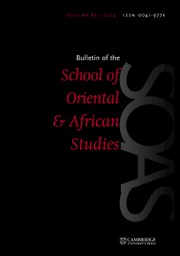The Chunqiu 春秋, here translated as Spring and Autumn, is one of the canonical texts of early Chinese literature and a classic of Confucian thought. Traditionally, this has been understood as an annalistic history (supposedly edited by Confucius himself), with chronologically arranged entries documenting some 250 years of events focused on the state of Lu 魯, based in what is now Shandong Province. Given that the Chunqiu is the only pre-unification (before 221 bce) state history to have been handed down in an unbroken chain of transmission since antiquity, coupled with its status as a repository for Confucian thought, it has been the focus of an outpouring of scholarly activity that shows no signs of abating after more than two and a half millennia. However, even its most fervent admirers would agree that it is extraordinarily difficult to understand, and hence for many centuries, it has usually been read in conjunction with one of the three attached traditions (zhuan 傳), most commonly the Zuozhuan 左傳 (Zuo's Tradition). Over the course of the last twenty years, Newell Ann Van Auken has established herself as the foremost Western expert on this truly challenging text, and in this book, she turns to the vexed question of what the Chunqiu is actually trying to say in its laconic and strangely phrased sentences.
Thanks to the practice of reading the Chunqiu through its traditions, it has usually been understood as a historical text – if an unsatisfactory one, given the presence of numerous easily demonstrable inaccuracies. However, as Van Auken shows here, it would be more accurate to say that this is a highly crafted record of hierarchy, which makes use of carefully selected historical events to frame the ruling aristocratic house of Lu as the most important entity in the political and social order of the Spring and Autumn period in the Eastern Zhou dynasty (770–481 bce). Since the rulers of Lu were far from being the most highly ranked or well-regarded of the time, and their state was neither outstandingly wealthy nor possessed of a very strong army, to present them at the apex of power required very careful manipulation of the historical record. These peculiarities of the Chunqiu have, of course, long been recognized, but they have often been misunderstood as a function of “editing” by Confucius in order to assign praise and blame to individual historical actors, or else elided through the process of reading the text alongside a tradition. It is only when the Chunqiu is read as a standalone work that its alien qualities can really be appreciated.
The first chapter of Spring and Autumn Historiography deals with traditional and modern understandings of the Chunqiu, particularly the interpretation of this work as annalistic history. Meanwhile, chapters 2 “Recording the day” and chapter 3 “Encoding individual rank” deal with issues concerning dates and nomenclature respectively. Chapter 4, “An idealized interstate order”, describes how events were written up in such a way as to place the state of Lu at their centre. Chapter 5, “Registering judgements”, considers how records of suicides, murders, and other untimely deaths could be phrased to obfuscate the actual circumstances in which a succession of violent demises occurred, and chapter 6, “Concealing submission”, details the vocabulary used to glorify the position of the lords of Lu in diplomatic meetings and hide the fact that they were attending as an inferior partner. Cumulatively, this analysis records a society in which rank and birth were everything – the Chunqiu records the world of royalty, aristocrats, and their attendant noblemen in terms that appear simple and straightforward but are in fact very highly nuanced and designed to present the ruling house of Lu in the most gracious and laudatory terms.
The Chunqiu has long been comparatively neglected in Western academia, in contrast to the intense interest shown in other texts that deal with the same period, and indeed other Confucian classics. Although not recognized, part of this neglect must be ascribed to the aristocratic viewpoint expressed throughout this text. In this regard, Van Auken is to be commended for the accuracy of her translations, and the care and attention paid particularly to the nuances of titles and rank. All too often in contemporary Western scholarship an underlying contempt is shown for the history of pre-imperial China by inaccurate and sloppy translations of titles, as if they do not really matter and a term like gong 公 (a posthumous honorific for a male aristocrat, here translated as “lord”) can equally well be rendered as “duke”, “king”, “prince” and so on, just as if there were no difference in meaning. Spring and Autumn Historiography places the techniques used in creating this record at the centre of the analysis, and as such, the explanation of the terminology used and the translation of key terms is excellent.
Ultimately, the Chunqiu is a challenging text not just because it is very old, very terse, and deals with events very far away, but because it describes history as it was made – for better or worse – by those who held power by right of being born into a long-established hereditary aristocracy, and it was written to present their doings in the very best possible light. Also present in this text are those who fought against this entrenched hierarchy armed with a ruthlessness and brutality that can be just as unsettling as the prolonged contemplation of unearned privilege. Newell Ann Van Auken is to be commended for her work in bringing this important text to an English-language speaking audience, making the laconic wording and alien concerns comprehensible to people in a very different time and place.



